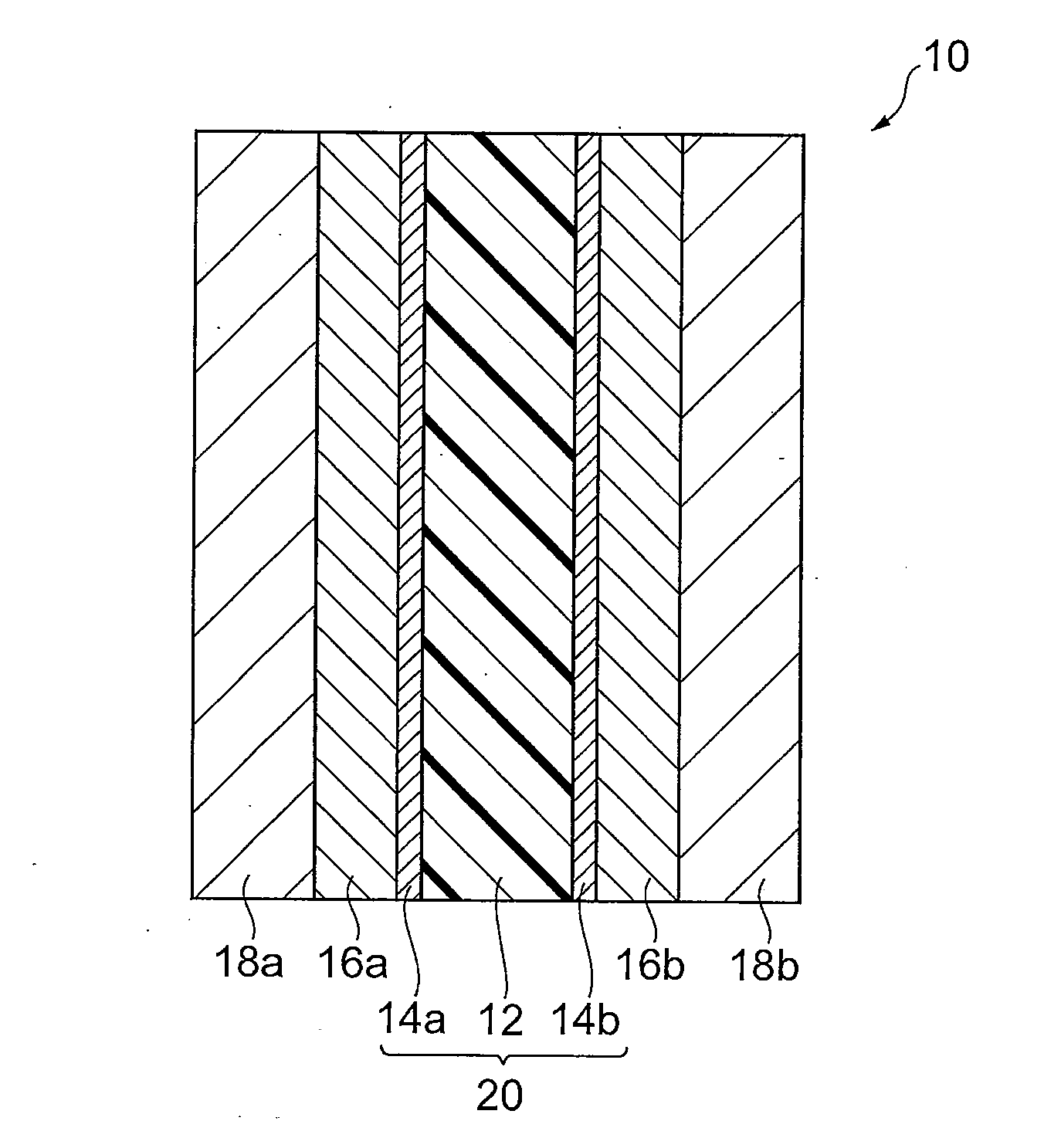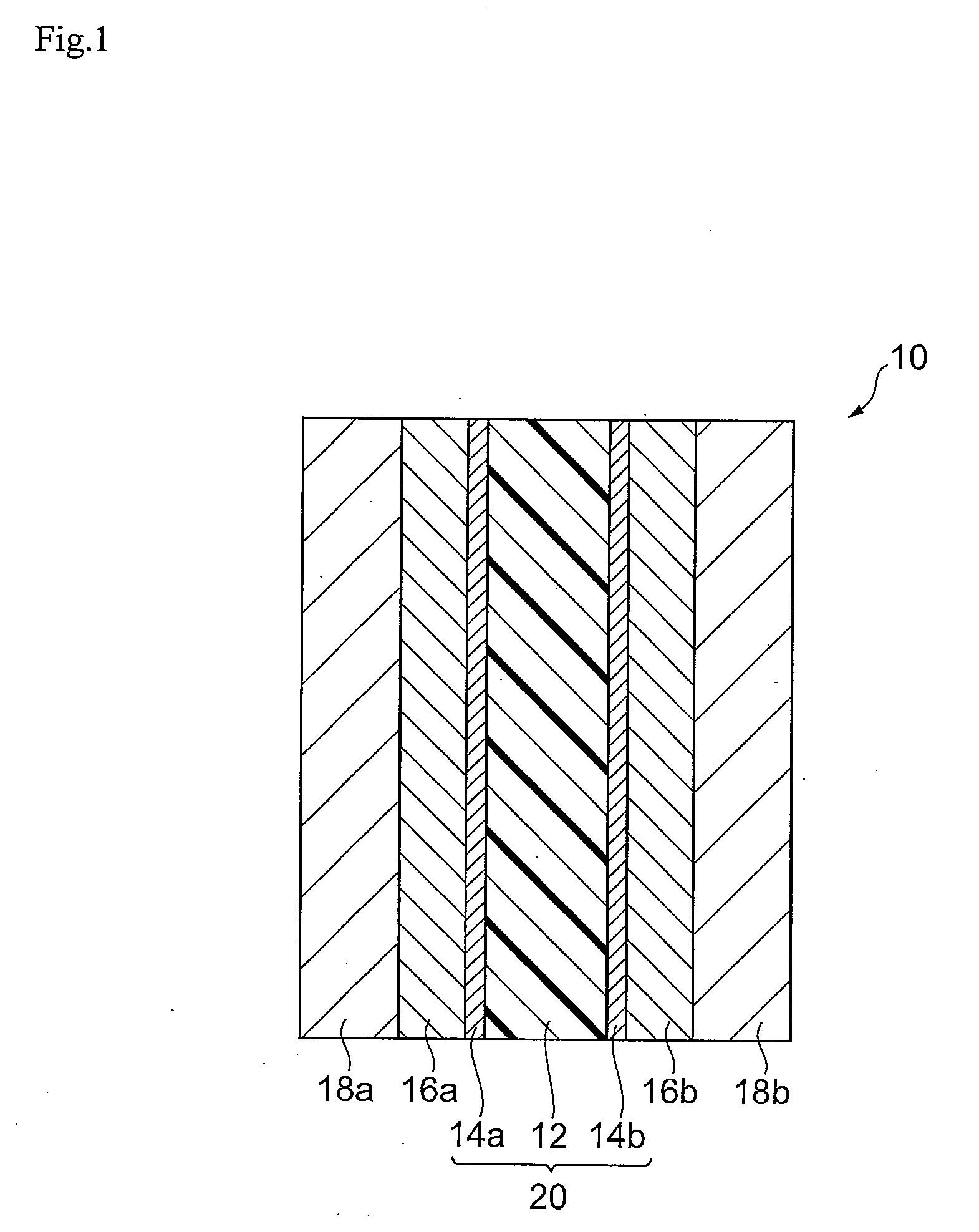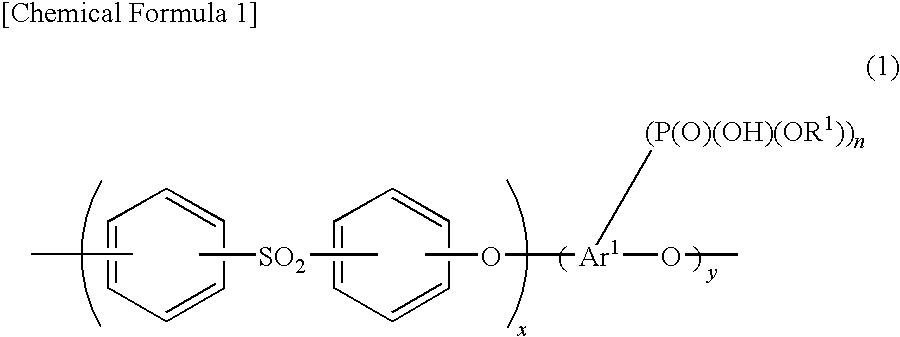Catalyst ink, method for producing catalyst ink, method for producing membrane-electrode assembly, membrane-electrode assembly produced by the method, and fuel cell
- Summary
- Abstract
- Description
- Claims
- Application Information
AI Technical Summary
Benefits of technology
Problems solved by technology
Method used
Image
Examples
example 1
[Example 1
Production and Evaluation of Fuel Cell]
(Preparation of Catalyst Ink A)
[0163]First, the catalyst inks necessary for production of the membrane-electrode assembly were prepared. Specifically, 1.00 g of platinum-supporting carbon with platinum supported at 51 wt % was loaded into 6 mL of commercially available 5 wt % Nafion solution (polymer electrolyte solution, solvent: mixture of water and lower alcohol), and then 13.2 mL of ethanol was added and 3.77 g of aromatic polymer emulsion A obtained as described above was added. The obtained mixture was subjected to ultrasonic treatment for 1 hour and then stirred for 5 hours with a stirrer to obtain catalyst ink A.
[0164](Production of Membrane-Electrode Assembly)
[0165]Catalyst ink A was coated by spraying onto a 5.2 cm-square region at the center of one side of polymer electrolyte membrane 1 obtained by the production method described above. The distance was 6 cm from the discharge slit to the membrane, and the stage temperature...
example 2
(Preparation of Catalyst Ink B)
[0174]After loading 1.00 g of platinum-supporting carbon with platinum supported at 51 wt % into 6 mL of a 5 wt % Nafion solution (polymer electrolyte solution, solvent: mixture of water and lower alcohol), 13.2 mL of ethanol was added and 5.00 g of aromatic polymer emulsion B obtained as described above was added. The obtained mixture was subjected to ultrasonic treatment for 1 hour and then stirred for 5 hours with a stirrer to obtain catalyst ink B.
[0175](Production of Membrane-Electrode Assembly)
[0176]Membrane-electrode assembly 2 was fabricated in the same manner as Example 1, except that catalyst ink B was used instead of catalyst ink A. The anode catalyst layer and cathode catalyst layer of the membrane-electrode assembly 2 were layers comprising 0.6 mg / cm2 platinum as calculated from the compositions and coated weights.
[0177](Production of Fuel Cell)
[0178]A fuel cell was fabricated by the same method as Example 1, except for using membrane-elec...
example 3
(Production of Membrane-Electrode Assembly)
[0179]Membrane-electrode assembly 3 was fabricated by the same method as Example 1, except for using polymer electrolyte membrane 2 instead of polymer electrolyte membrane 1. The anode catalyst layer and cathode catalyst layer of the membrane-electrode assembly 3 were layers comprising 0.6 mg / cm2 platinum as calculated from the compositions and coated weights.
[0180](Production of Fuel Cell)
[0181]A fuel cell was fabricated by the same method as Example 1, except for using membrane-electrode assembly 3. The obtained fuel cell was subjected to a load change test and the characteristics of the fuel cell were evaluated, in the same manner as Example 1.
PUM
| Property | Measurement | Unit |
|---|---|---|
| Acidity | aaaaa | aaaaa |
| Durability | aaaaa | aaaaa |
Abstract
Description
Claims
Application Information
 Login to View More
Login to View More - R&D
- Intellectual Property
- Life Sciences
- Materials
- Tech Scout
- Unparalleled Data Quality
- Higher Quality Content
- 60% Fewer Hallucinations
Browse by: Latest US Patents, China's latest patents, Technical Efficacy Thesaurus, Application Domain, Technology Topic, Popular Technical Reports.
© 2025 PatSnap. All rights reserved.Legal|Privacy policy|Modern Slavery Act Transparency Statement|Sitemap|About US| Contact US: help@patsnap.com



